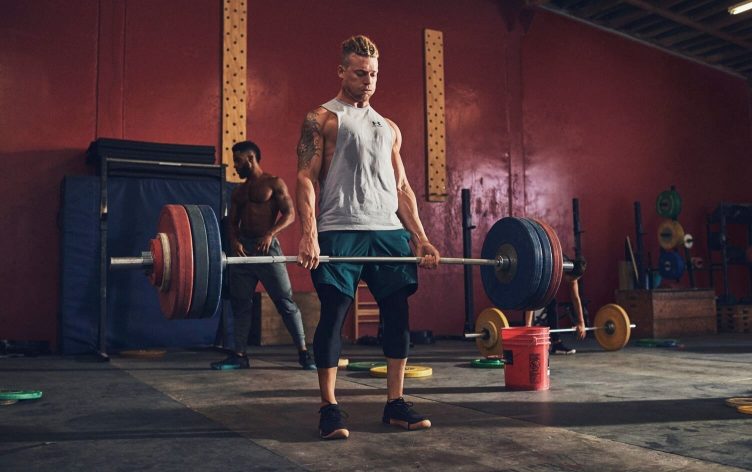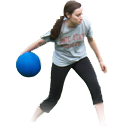
Your Guide to Supersets, Single Sets, Circuits and More

When it comes to structuring a workout, there’s a nearly unlimited number of options when you factor in different types of equipment, exercise selection and sets styles (or how you group exercises together). All of these elements are important, but when it comes to sets style, the one you choose should depend on your goals, experience with working out and preferences.
It can be tough to choose between them, but here’s the good news: While you might want to prioritize one over others, you don’t have to pick just one. “We are all such creatures of habit, and one style will always stand out from the rest depending on personality type, fitness level, fitness goals and the amount of time your schedule allows,” says says Michelle Miller, a personal trainer. “But ideally, to keep your routine fresh and to keep your muscles guessing, mix it up!”
Here, a breakdown of the most popular sets styles options and what each is best for.
SUPERSETS
You’ve probably heard of supersets before, as they’re the most popular sets style at the moment. There are several types of supersets:
Antagonist superset: This is the most common type. “An antagonist superset involves working opposing muscle groups one right after the other,” Miller explains. For example, you’d pair a chest exercise with a back exercise or a quadriceps exercise with a hamstrings exercise. “The theory is that muscles recover faster when working opposing muscle groups, therefore it’s an efficient and highly effective way to strengthen the muscles while ensuring they are also well-balanced,” Miller adds.
Compound (agonist) superset: This means working the same muscle group with two different exercises, one right after the other, according to Miller. So you’d do two chest exercises together or two hamstring exercises together. “The theory is that by working the same muscle group in two different back-to-back exercises, the area of focus is essentially well-done by the time the sets are complete.”
Unrelated superset: These work two muscle groups that are completely unrelated to each other. So you might do a chest exercise, then a quads exercise, for example. “This is a great way to maximize time and strength because the muscle groups being worked are completely unrelated and, in turn, receive an adequate amount of rest in between sets,” Miller explains.
BEST FOR:
People who are tight on time. “You can’t spend all day in the gym,” points out Brian Nguyen, CEO of Elementally Strong. By strategically pairing exercises together and minimizing unused rest time, supersets allow you to spend less time overall in the gym while still getting a quality workout.
People who want to burn fat. “Supersets are also great for those looking for fat loss by keeping your heart rate at an elevated state,” Nguyen notes. “You may not be burning as many calories as cardio, however, the strength-training effects last far beyond the workout.”
STRAIGHT SETS
“Straight sets are what most people think of when they think of while weightlifting,” says Ben Reuter, PhD, certified strength and conditioning specialist and athletic trainer. They’re a single exercise, repeated for a specific number of sets before moving on to another exercise, he adds. “An example of straight sets would be 3 sets of 12 bench presses with a specific amount of rest between sets.”
BEST FOR:
People focusing on a specific muscle or a difficult exercise. If you’re doing an Olympic lift or another exercise that uses multiple joints (Think: deadlifts, squats, hip thrusts), single sets may allow for better technique Reuter says.
People who want to get stronger. Since you’re getting a true rest period between sets, you are more likely to be able to lift more weight during a straight set.
CIRCUITS
“Exercise circuits involve anywhere from 5–12 different exercises that are done one after the other and typically alternate parts of the body,” Miller says. By the time the workout is complete, you’ve ideally worked every major muscle group. “Normally, people go through an entire circuit 1–3 times, resting between exercises, between complete rounds or not at all.” Circuits can include exercises done with machines, bodyweight exercises, cardiovascular exercises or some combination of the three.
BEST FOR:
Avoiding workout boredom. “Circuits are a great way to mix in different modalities, and it can be very fun to move from station to station,” says Kari Woodall, owner of BLAZE. “They are a great way to prevent boredom in workouts and to be creative in programming.”
People who want to work on conditioning. “Circuits may focus on longer rest and strength, or shorter rest and endurance, although they are typically programmed for conditioning,” Woodall says.
PYRAMID SETS
“In ascending pyramid sets, the focus is on one exercise and the weight starts off relatively light and the reps relatively high,” Miller explains. “With every set, the weight goes up and the reps go down. The average pyramid set is anywhere from 3–5 sets of 5–20 reps.” For example, you might start with 10 deadlift reps at 80 pounds, then do 8 reps at 90 pounds, then finish with 5 reps at 100 pounds.
These can also be done in reverse, known as a descending pyramid set, starting with the heaviest weight and lowest amount of reps, working up to higher reps and lighter weight. This is also known as a drop set and is typically appropriate for more advanced lifters.
BEST FOR:
People with injuries or who are injury-prone. “I prefer ascending pyramid sets because the gradual progression of weight prepares the muscles and joints to lift with less risk to surrounding structures,” Miller says.
Nguyen agrees, noting that “people with injuries who need to avoid doing maximal work will do well with pyramid sets.”
People of all levels. “Similar to circuits, there is a quite a bit of flexibility when it comes to rest time and intensity with ascending pyramid sets, so this set style is another great choice for people of varying fitness levels and fitness goals,” Miller notes.
The Arena District Athletic Club is more than just a gym, it’s a premier fitness facility located in the heart of the Arena District in downtown Columbus. We provide convenience and quality, featuring top-of-the-line equipment, top-notch personal trainers, spa-like locker rooms and a wide variety of free group fitness classes daily including Cardio, Spinning, Barre Fusion, Yoga, Boot Camp and more. We offer free 2-hour parking and convenient contract-free memberships, to fit your healthy lifestyle needs. Don’t just join, belong.




